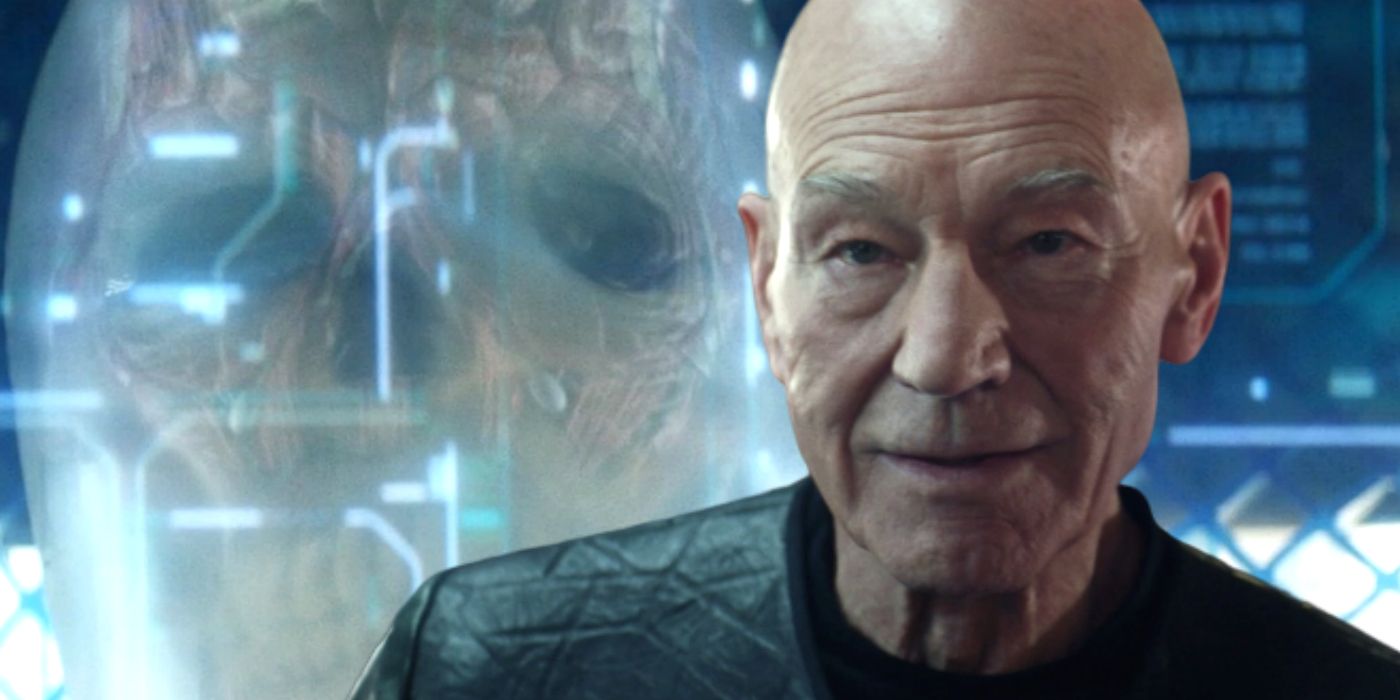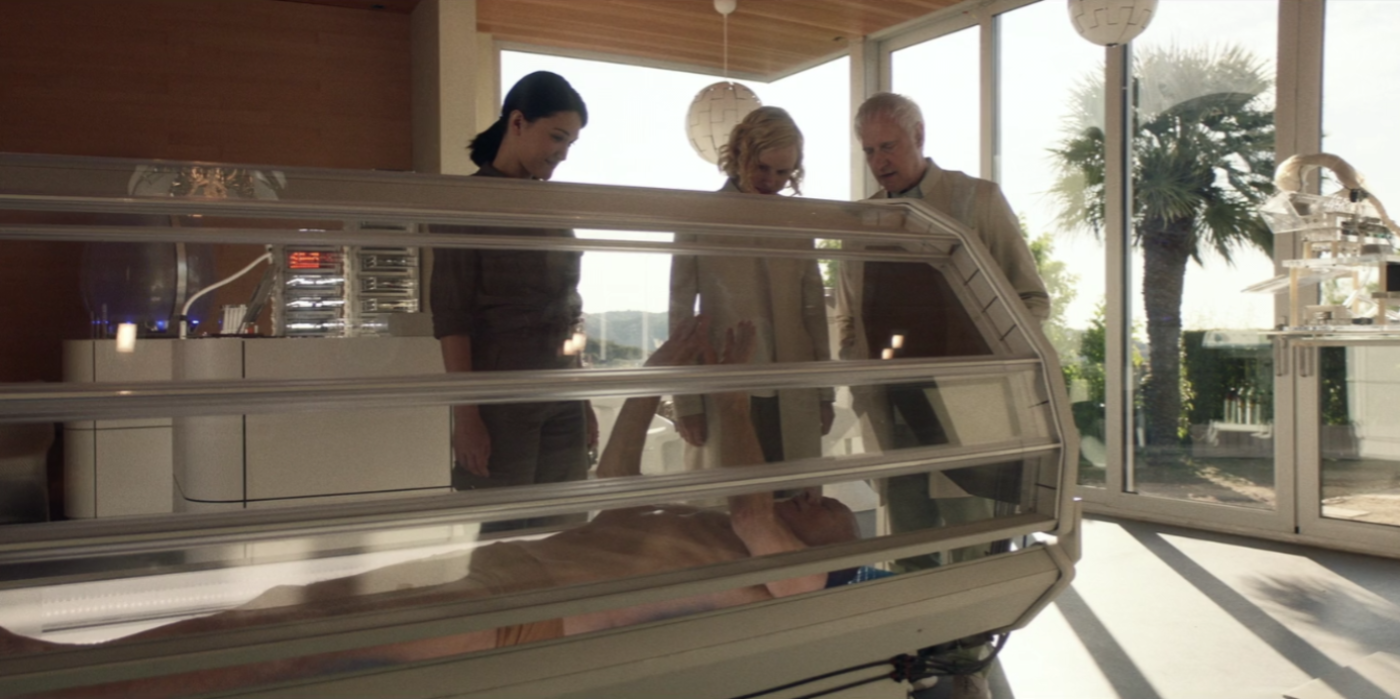Star Trek: Picard's big twist in the season finale "Et In Arcadia Ego, Part 2" was exactly what the show needed, as Jean-Luc himself became a synthetic life form via Dr. Altan Soong's golem. The first season of Star Trek: Picard was a meditation on mortality, regret, and second chances, but in a more literal sense, it was about artificial life and its treatment by organic life. Much of Star Trek ruminates on the nature of existence, but Jean-Luc Picard, more than most, has been confronted with issues having to do with synthetic life, and he established many of Starfleet's protocols on the matter while the captain of the Enterprise.
It didn't hurt that his beloved second officer, Data, was at the time the galaxy's most advanced synthetic life form. Data's legacy carried on in Star Trek: Picard, as it was revealed young Soji Asha was made from Data's engrams, essentially making her Data's daughter. Not only was Soji a kind of synthetic offspring, but there was an entire civilization of synthetic life forms on the planet Coppelius. These were crafted by Soong and Bruce Maddox, the latter a Starfleet cyberneticist who had befriended Data after the events of the classic Star Trek: The Next Generation episode "The Measure Of A Man," which first established Data's rights as a sentient being.
Jean-Luc Picard now finds himself among the ranks of synthetic life forms after a last ditch effort to save his life. It's a twist with huge, character-altering ramifications, one that the show could essentially remold itself around in Star Trek: Picard season 2.
Picard Is An Android Now
After convincing Soji and the inhabitants of Coppelius to call off an attempt to contact extradimensional synthetic aliens that promised to wipe out organic life, Picard succumbed to the brain abnormality that he realized was fatal from Dr. Benayoun back in Star Trek: Picard's second episode "Maps and Legends." But that would not be the end of the story for Jean-Luc Picard. Dr. Soong - who implies he's dying to Agnes Jurati, Picard's resident cyberneticist/murderer - created a vessel by which an organic consciousness could be transferred into a synthetic body, which he called a golem.
With Agnes' help, Soong had planned to transfer his own consciousness into the golem, granting himself immortality. But when he realized the android Sutra had conspired with the Romulan Narek to kill her sister Saga, Soong realized his creations were no better than humanity and switched sides, aiding Picard's team in their attempt to call off the synthetic alien destruction prophesied by the Admonition. With Soong's help - and an incredibly well-timed intervention by Will Riker and a Federation fleet - Picard and friends called off the alien incursion and managed to hold off the Romulans. But the cost was high - after buying everyone time by fooling the Romulans with the Picard Maneuver in La Sirena, Picard collapsed. Transported to Coppelius Station, he said his dying goodbyes to his new crew before succumbing to his brain condition.
However, instead of death, Picard found his consciousness temporarily housed in a computer simulation, where he again met his dearly departed friend, Data. Dr. Soong was able to extract Data's memories and consciousness from B-4, the inferior copy of Data from Star Trek: Nemesis. Data had transferred his memories into B-4 just before his death in hopes that he could awaken a greater curiosity in the remedial android. In the simulation, Data and Picard get a chance to properly say goodbye to each other, though Picard doesn't initially realize he's going to wake up. After promising to disconnect the android's mind from the simulation, allowing Data to experience death, Picard finds himself awake in a brand new body, looking very much like his old one. Soong knew Picard wouldn't want to live forever or have any of Data's superpowers, so he refined the golem to give Picard a normal 24th century lifespan - and he even got a new, organic heart.
Picard Has Become The Thing He Championed
It's not hyperbole to say Jean-Luc Picard wrote the book on how the Federation approaches synthetic life, or at least how it should. Picard shouted down the claim that Data was simply Starfleet property in "The Measure Of A Man." He even defended Data's rights as a parent over 30 years before the events of Star Trek: Picard in the classic TNG episode "The Offspring," which saw Data create his first daughter, Lal. When Starfleet decided it was too dangerous to have the only two androids in existence on the same ship and planned to separate Data and Lal, Picard put his career on the line by denying Lal's transfer, proclaiming no man would hand his child over to the state while under his command. It would be a moot point, as Lal's positronic brain was flawed, and she died soon thereafter. Picard didn't treat Lal's demise as a machine breaking down, but as a man losing his daughter.
Picard's regard for synthetic life extended beyond Data and his ilk. In the TNG episode "The Quality Of Life," Data surmises that a group of experimental diagnostic drones called Exocomps may have gained sentience. Rather than dismiss the ostensibly absurd idea at face value, Picard allows Data to lobby on the Excomps' behalf. Eventually, when Picard's life was in danger, the Exocomp's chose to rescue him, with one even sacrificing itself to save the others. The Exocomps had none of Data's anthropomorphic charm, they were essentially floating lunch boxes. Yet Picard still treated them with the same fundamental respect and empathy he'd have for any Klingon or Vulcan. It was the discovery of new life, which was always the point of Starfleet.
While some fans may balk at the idea of Picard becoming a synth himself, it's been awhile since he's been fully human anyway. As recalled in the TNG episode "Samaritan's Snare" - and witnessed in the much better TNG episode "Tapestry" - Picard was stabbed through the heart in a bar brawl just before getting his first assignment out of Starfleet Academy. Picard received an artificial heart as a replacement, making him something of a cyborg. On top of that, he was assimilated into the Borg collective as Locutus. And while the physical scars from that ordeal have healed, the emotional ones remain, and he can still hear the whispers of the collective consciousness when the Borg are nearby.
This is potentially the start of an exciting new chapter for Star Trek: Picard. The show's flavor of exploration already leaned toward the internal, but now the main character is himself a whole new world to discover. Is Jean-Luc Picard still fundamentally the same man? Will he take this new lease on life as an opportunity to become even more brazen and roguish after his two decades in isolation? Only time will tell, but the journey is just beginning for Jean-Luc Picard, both inside and out.



